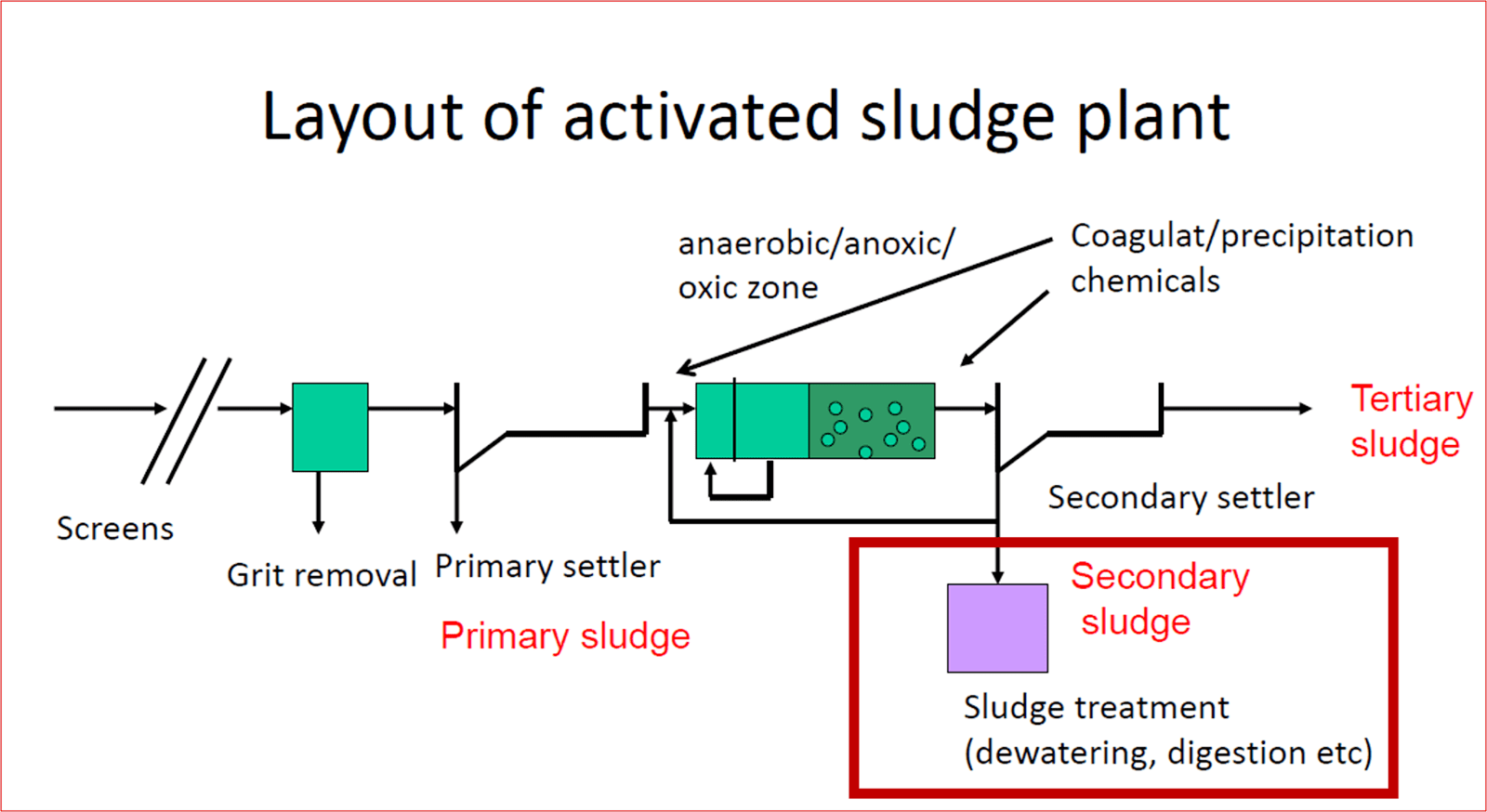In aerobic biological oxidation of carbon, the organic carbon in the wastewater is converted to carbon dioxide. The reaction also results in the production of new bacterial cells. Maintaining an optimal volume of bacterial cells in the bioreactor is important. If the number of bacterial cells is low, then the kinetics of the reaction is also low. When the bacterial cells are too high, as the bioreactor space is limited they will overflow from the bioreactor. Hence, there must be a mechanism to remove excess bacterial cells (sludge) from the bioreactor.
In suspended growth processes, the removal of excess sludge is quite straightforward. The excess sludge is removed from the secondary settler as shown in the figure below. The excess sludge is mentioned as Waste activated sludge (WAS). WAS is further directed for sludge treatment, for instance, by anaerobic digestion.

The picture shows a typical layout of an activated sludge plant. The excess secondary sludge goes through a suitable sludge treatment.
Credits: Prof. Britt-Marie Wilen, Chalmers University of Technology, Sweden.
In attached growth processes, especially in trickling filters, the removal of excess sludge is quite uncontrolled. It’s called sloughing off. Once, the biofilm matures, the pressure from the water flow triggers sloughing off parts of the biofilm or even the entire biofilm from the trickling filter.
In any bioreactor removing the excess bacterial cells is essential. So the question is how do we do it in our biofilter?
EBR is a fixed film process (attached growth). The microbes attach to the packing media to form biofilms. The packing media in our biofilter fills the entire reactor (say it’s filled with sand-like particles). Then the conventional sloughing off that occurs in a trickling filter cannot be expected. As the spacing within the packing media particles is practically negligible for the sloughing off process. But still, the excess biofilms must be removed or it’s going to clog the biofilter. Here comes the metazoan (earthworms). We use earthworms to predate the excess biofilms. It maintains an optimal amount of biofilms in the bioreactor. Hence, there’s no production of waste sludge that must be disposed of or further treated as in the case of the activated sludge process.